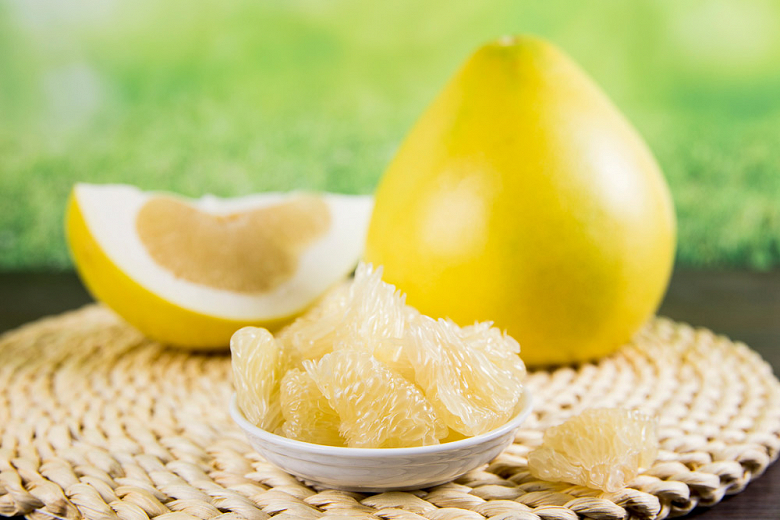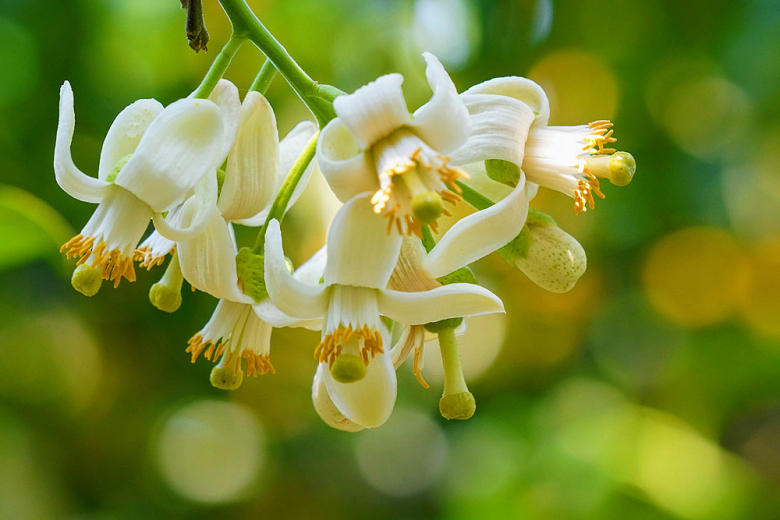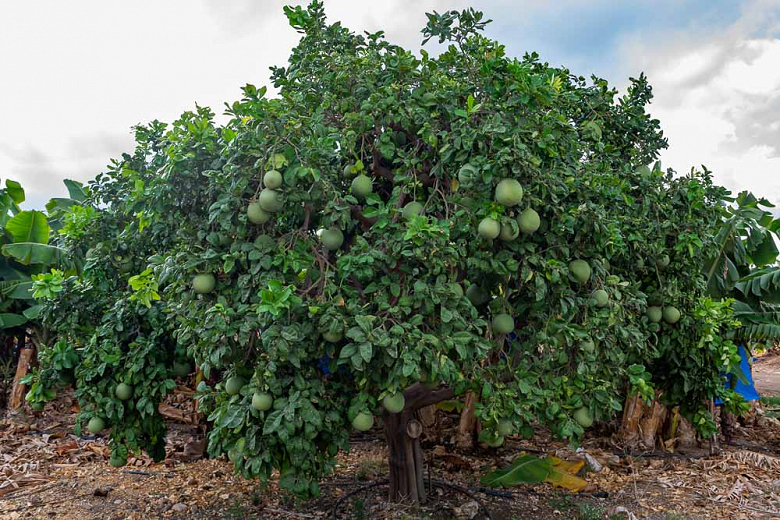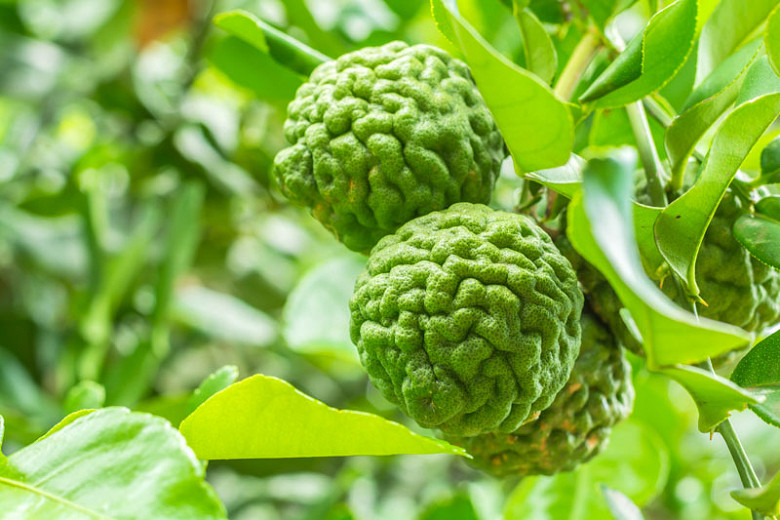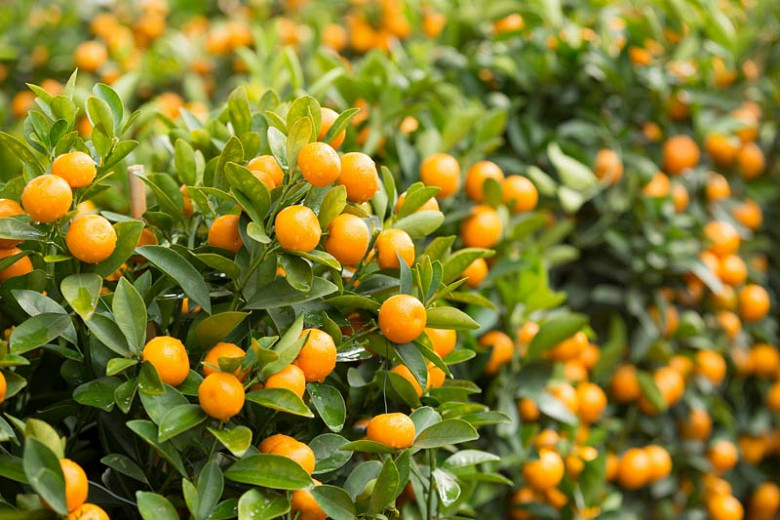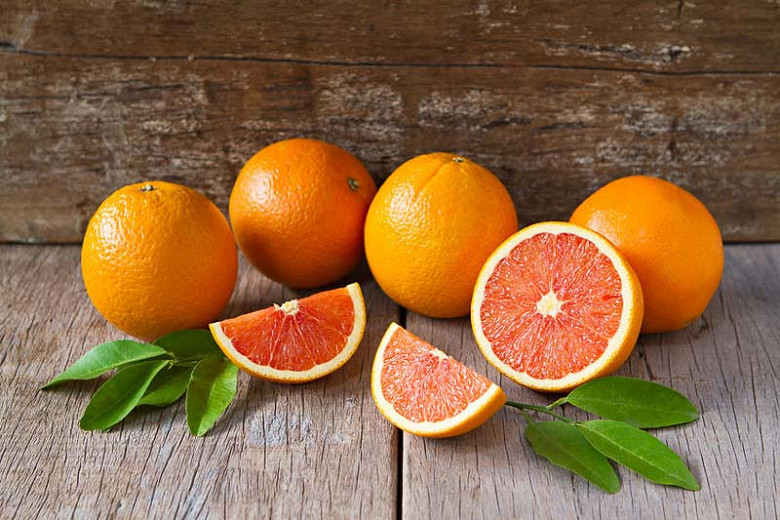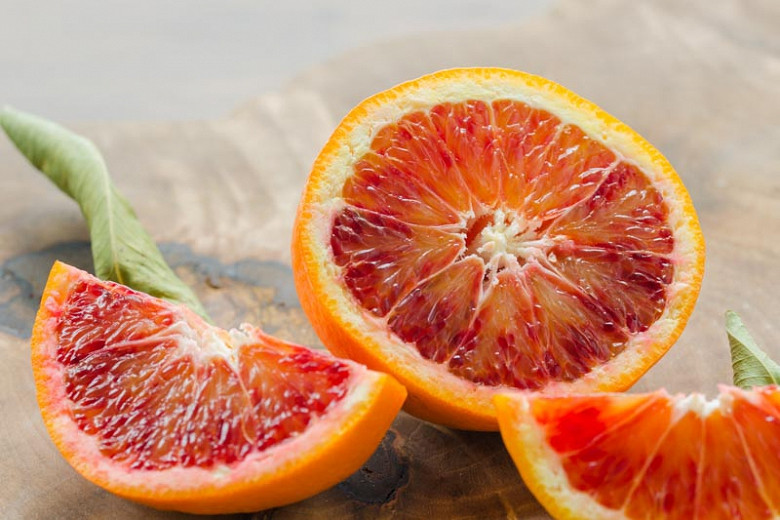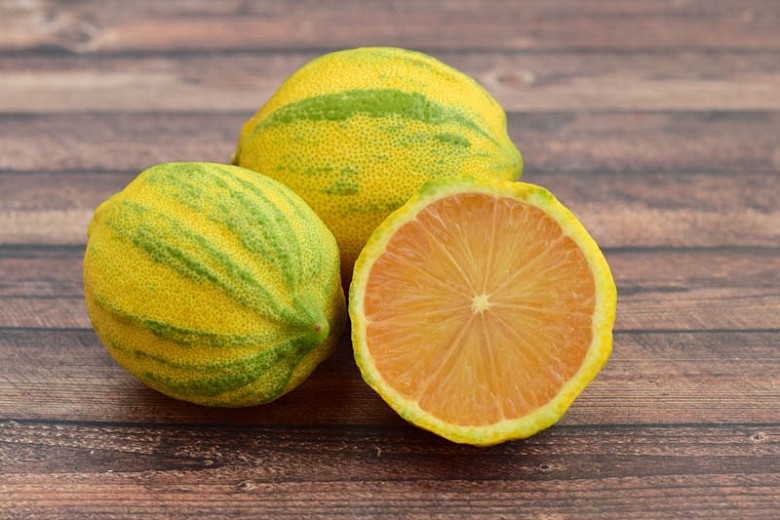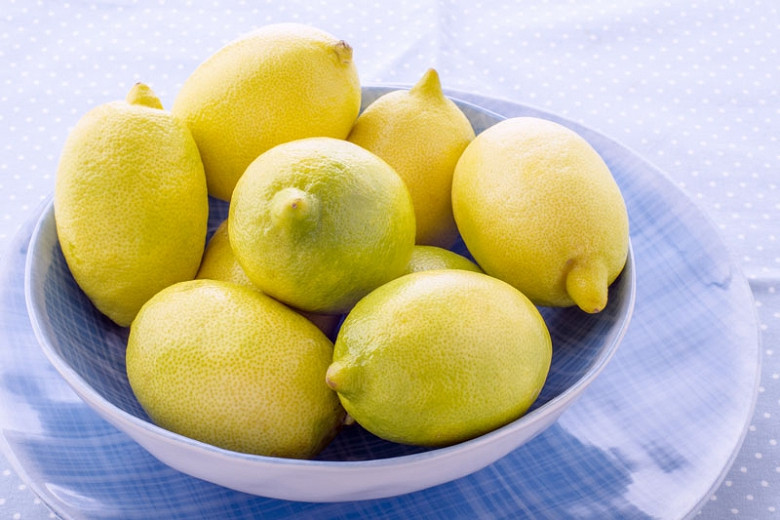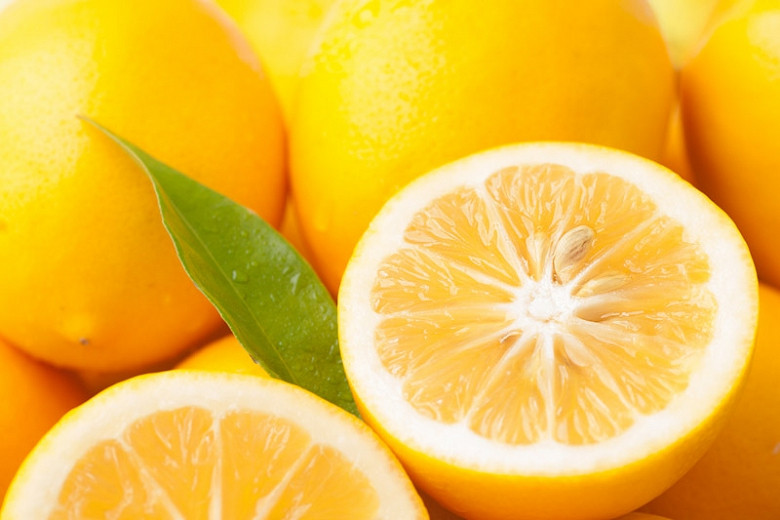Citrus maxima (Pummelo)
Citrus maxima (Pummelo) is a large evergreen shrub or small tree, prized for its huge, round to pear-shaped fruits that resemble grapefruits. The shrub or tree has somewhat of a weeping habit with the heavy fruits hanging from the bottom of the tree. A mature Pummelo tree can reach 50 ft. in height (15 m) and have a trunk up to 12 in. thick (30 cm). The oval leaves are very large, 8 in. long (20 cm), glossy above, dull, and minutely hairy beneath. Fragrant flowers appear throughout the year. Green to pale yellow, the fruits are the largest of all citrus and may weigh as much as 5 pounds (2 kg). There are even some records of fruits weighing up to 20 pounds (10 kg)! The rind is very thick and the flesh is sweeter and less bitter than the flesh of grapefruits. Generally, they contain only a few seeds. However, a pummelo cross-pollinated by another pummelo is apt to have many seeds. Pummelo fruits can be stored for 2-3 months without suffering from deterioration. Some of the more common varieties of pummelo include Chandler, Ichang, Red Shaddock, Reinking, and Webber.
- Grows up to 15-50 ft. tall (4.5-15 m).
- A full sun lover, this plant is easily grown in loamy, moist but well-drained soils. Needs water regularly but cannot stand flooding or saturated soils. Apply a balanced liquid every 2-3 weeks during the growing season. Water sparingly in winter.
- No routine pruning is necessary. Remove diseased, damaged, congested, or crossing shoots.
- Generally disease free. Keep an eye out for scale insects, mealybugs, and glasshouse red spider mites.
- Propagate by semi-ripe cuttings in summer or layer in early spring. Sow seed at 61°F (16°C) in spring.
- Like that of other citrus fruits, the peel of the pummelo contains skin irritants.
- Toxic to dogs, toxic to cats, toxic to horses.
- Native to southeastern Asia and all of Malaysia.
Requirements
| Hardiness | 9 – 11 |
|---|---|
| Climate Zones | 7, 8, 9, 12, 13, 14, 15, 16, 17, 18, 19, 20, 21, 22, 23, 24, H1, H2 |
| Plant Type | Fruit, Shrubs, Trees |
| Plant Family | Citrus |
| Exposure | Full Sun |
| Season of Interest | Spring (Early,Mid,Late)Summer (Early,Mid,Late)FallWinter |
| Height | 15' – 50' (4.5m – 15m) |
| Water Needs | Average |
| Maintenance | Low |
| Soil Type | Loam |
| Soil pH | Acid, Neutral |
| Soil Drainage | Moist but Well-Drained |
| Characteristics | Fragrant, Showy, Evergreen, Fruit & Berries |
| Garden Uses | Patio and Containers |
| Garden Styles | City and Courtyard, Mediterranean Garden |
